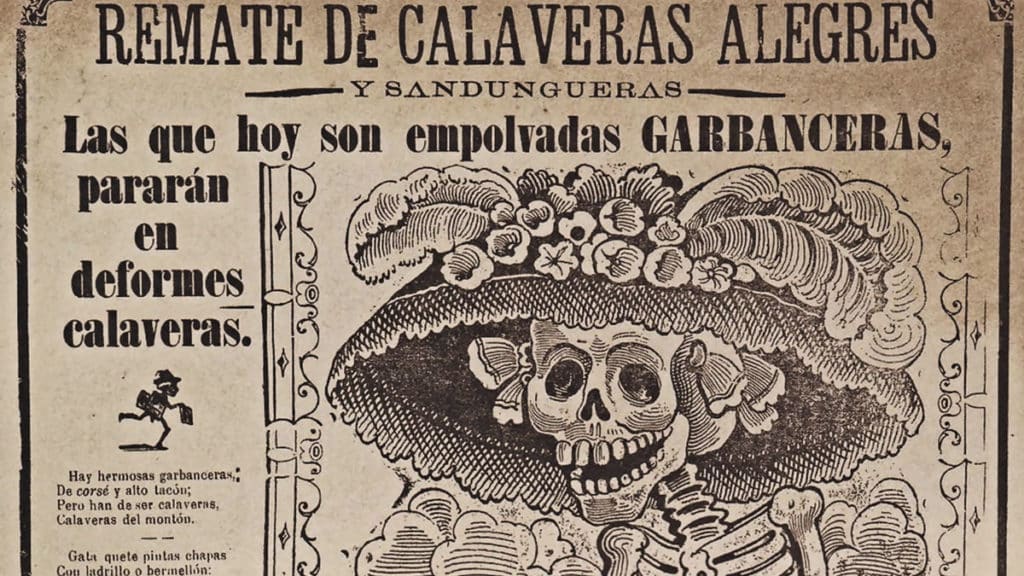Catrina La Calavera Garbancera was drawn by Mexican engraver José Guadalupe Posada. She is the modern representation of Mictēcacihuātl, the Aztec goddess of the underworld.
La Catrina has become the modern icon of Day of the Dead (Día de los Muertos).
Catrina is a Tease Who Became an Icon

Sometime between 1910 and 1913, Posada made his etching of La Calavera Garbancera. It was published in 1930 after he died. As often happens when cultures collide, Posada was making fun of people. Teasing is a potent form of cultural exchange.
“Garbancera” is a nickname for an Indigenous American who tries to look European and denies their own heritage.
Catrina hides her Mexican origins by wearing a French style hat and just her bones which make her look whiter.
It was a political commentary on the mess created by Mexican dictator Porfirio Diaz who was obsessed with European ways and helped modernize Mexico, but was so corrupt that his leadership inspired the Mexican Revolution.
In 1945-47, the great Mexican muralist Diego Rivera painted a mural of famous Mexicans in a hotel restaurant next to the Alameda Central Park in Mexico City. He included himself, his wife Frida, and La Calavera Garbancera. “Sueño de una tarde dominical en la Alameda Central” (Dream of a Sunday Afternoon in the Alameda Central) made Posada’s Catrina even more famous.
Catrina is the iconic modern Mexican image of death. She speaks to the conflict between rich and poor and the fact that in the end we are all equal.
Though an image of death, Catrina always seems to be smiling. In death, she embraces life. That’s really what the Day of the Dead is all about.
